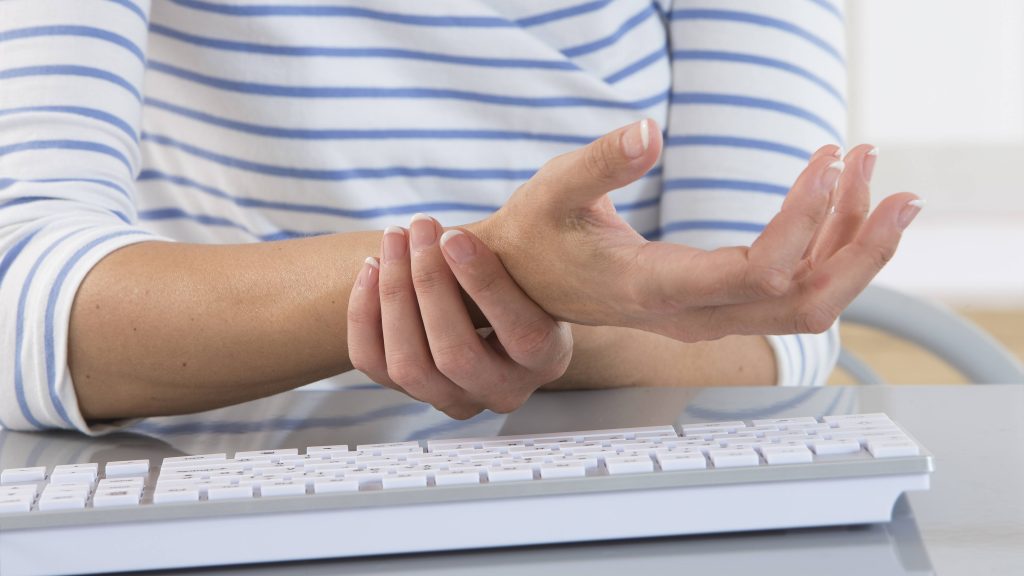-
Mayo Clinic Q and A: Repetitive use wrist and elbow pain

Dear Mayo Clinic: Earlier this spring, I developed pain in my wrist and on the inside of my elbow after a long weekend of tennis and yardwork. I applied ice for a few days, but the pain remains anytime I rotate my arm a certain way or try to lift anything heavy. I even feel some pain while holding my cellphone. While I can hire someone to complete the landscaping activities, I have a tennis tournament coming up. I’m wondering what I can do to get back on the court pain-free.
Answer: The wrist and elbow certainly can be affected by robust activity ― athletic or otherwise ― especially if you have not been using the muscles a lot. The condition you're describing sounds like medial epicondylitis, a common injury associated with overuse. Although you mentioned playing tennis, this condition is also known as "golfer's elbow." But it isn’t limited to golfers.
Medial epicondylitis is a painful condition that develops when the muscles and tendons that control flexing of your wrist and fingers become inflamed and damaged, often by repeated stress due to gripping, or forceful wrist and finger motions. Golfers or tennis players may develop this condition when they repeatedly hit the ball incorrectly or use improper swing techniques.
With the increased use of mobile devices and computers, many people are developing wrist and arm pain as a result of improper ergonomic positioning while typing or texting. The best way to treat medial epicondylitis is to reduce repetitive wrist and hand activities until your symptoms improve. This means refraining from things such as excessive typing, yardwork, tennis, golf and other activities.
Ice the painful area for 15 to 20 minutes at a time, three to four times a day, for several days. Take an over-the-counter nonsteroidal anti-inflammatory drug, such as ibuprofen or naproxen sodium. Basic home rehabilitation stretches and exercises also can help minimize pain and get you back on the court faster.
For many people, self-care measures often are enough to take care of the problem. But, because you still have symptoms after icing it for several days, I would recommend an evaluation with your primary health care provider or a sports medicine specialist to determine if you need additional treatment.
Based on an exam and severity of your symptoms, your health care provider may recommend that you wear a counterforce brace on the painful arm. This type of brace can reduce strain on your muscles and tendons temporarily. Your provider also may refer you to a physical or occupational therapist who can teach you techniques to help ease your symptoms, as well as stretching and strengthening exercises. In most cases, no further evaluation or treatment will be needed beyond that point.
In the rare instance that your pain remains persistent, your provider may suggest a musculoskeletal ultrasound study or MRI to evaluate if there's a tear in one of your muscles or tendons.
Additional treatment may include corticosteroid injections. Although they can help ease pain for a while, these injections generally are not effective long term. Another newer treatment is platelet-rich plasma injections. The goal of this approach is to help heal tendon damage and promote the growth of new, healthy tissue.
When pain lasts despite other treatments, more invasive approaches may be necessary. Then if symptoms don't improve after thorough use of other treatments, surgery could be an option to remove the damaged tissue.
Once your symptoms resolve, it is important to take steps to prevent golfer's elbow from returning. Weight training to strengthen your forearm muscles and stretching exercises before you go play will help avoid injuries. If you golf, consider upgrading to lighter graphite clubs to reduce stress and strain on your wrists. For tennis, in addition to limiting the amount of time you spend on the court, you may need to adjust your grip. Consider having your swing or form evaluated by a tennis or golf pro, as adjusting underlying mechanics can reduce your risk for reinjury.
Most importantly, don't play through pain. If you notice discomfort in your wrist, elbow or forearm, take a break. Pain is your body’s way of signaling to you something is wrong. Many overuse injuries will improve with rest and home care. Hopefully, you will get back in the swing of things quickly and pain-free. — Dr. Kristina DeMatas, Family Medicine, Mayo Clinic, Jacksonville, Florida







